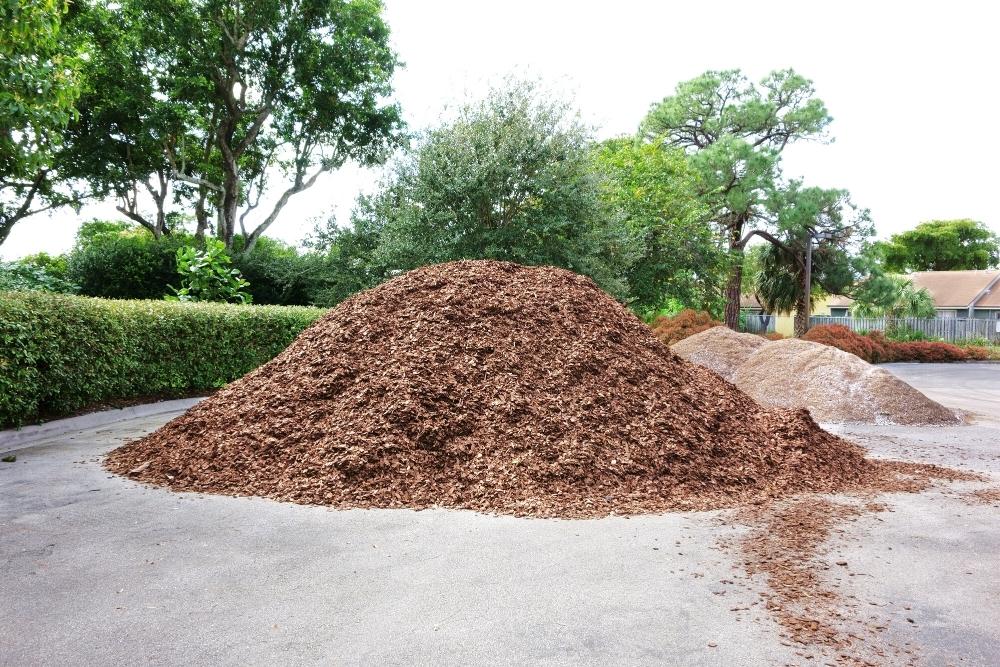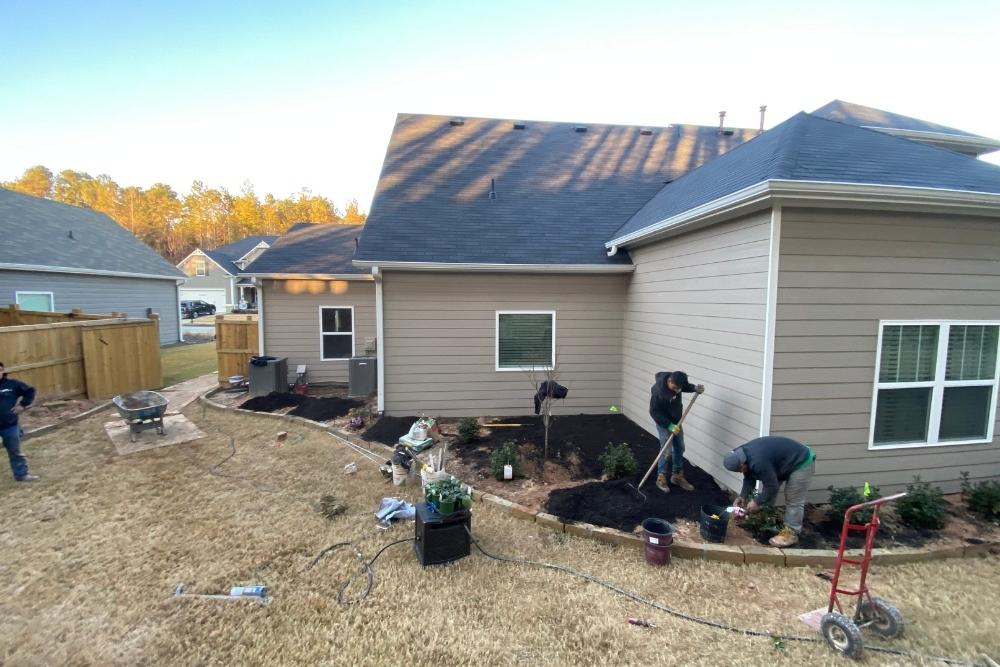Frequently Asked Questions
Are there any specific regulations for mulch installation in my area?
Yes, specific regulations for mulch installation can vary by city or region. It's essential to check with your local municipality or zoning office to understand any guidelines or restrictions that may apply in your area.
What is the cost of mulch installation per square foot?
The cost of mulch installation typically ranges from $0.75 to $2.00 per square foot, depending on the type of mulch and installation requirements.
What is the best time of year to install mulch?
The best time to install mulch is in the spring after the last frost or in the fall. This timing helps to retain moisture, suppress weeds, and protect plants from temperature fluctuations throughout the growing season.
How do I edge my garden beds for mulch installation?
To edge your garden beds for mulch installation, use a spade or garden edger to create a clean, defined border. Cut approximately 2-4 inches deep along the perimeter, ensuring it's straight or curved as per your design preference. This will help contain the mulch and prevent weed growth.
Can I use colored mulch to enhance my gardens appearance?
Yes, colored mulch can significantly enhance your garden's appearance. It adds vibrant hues that complement your plants, creating a visually appealing landscape while still providing benefits like weed suppression and moisture retention.
Can I install mulch myself or do I need a professional?
Yes, you can install mulch yourself if you're comfortable with basic gardening tasks. However, hiring a professional can ensure proper application and provide expertise for optimal results, especially for larger or more complex areas.
What type of mulch is best for weed suppression?
Organic mulches like wood chips, straw, or shredded bark are best for weed suppression. They smother weeds, retain moisture, and decompose to enrich soil, creating a healthier garden environment while reducing the need for weeding.
Do I need to remove old mulch before reinstalling?
Yes, it is recommended to remove old mulch before reinstalling to prevent mold growth and ensure better moisture absorption. However, if the old mulch is in good condition, you can simply refresh it by adding a new layer on top.
What is the recommended mulch depth for garden beds?
The recommended mulch depth for garden beds is typically 2 to 4 inches. This depth helps suppress weeds, retain moisture, and regulate soil temperature while allowing for adequate air circulation and nutrient absorption.
What are the different types of organic mulch materials?
Organic mulch materials include wood chips, straw, shredded leaves, grass clippings, cocoa hulls, and bark. Each option helps retain moisture, suppress weeds, and enrich the soil as they decompose, enhancing your garden's health and appearance.
What are the benefits of using inorganic mulch materials?
Inorganic mulch materials, such as gravel and rubber, offer durability and low maintenance. They help with moisture retention, weed suppression, and provide a clean aesthetic that can enhance your garden's overall appearance without the need for frequent replacement.
Can I install mulch around newly planted trees?
Yes, you can install mulch around newly planted trees. Just ensure the mulch is spread evenly and kept a few inches away from the tree trunk to prevent rot and allow airflow while maintaining moisture in the soil.
Can I install mulch around plants with shallow roots?
Yes, you can install mulch around plants with shallow roots. Just ensure that the mulch is applied gently and kept a few inches away from the plant stems to avoid suffocating the roots.
How often should I replenish mulch in my garden?
You should replenish mulch in your garden annually or as needed, depending on weather conditions and the type of mulch used. Regularly check for thinning or degradation to maintain optimal moisture retention and weed control.
How do I maintain mulch to prevent decay?
To maintain mulch and prevent decay, regularly replenish it to a depth of 2-3 inches, keep it aerated, and water it during dry spells. Avoid piling mulch against plant stems to promote airflow and discourage moisture buildup.
How do I prepare the soil for mulch installation?
To prepare the soil for mulch installation, first clear the area of weeds, debris, and old mulch. Then, loosen the soil with a rake or hoe, ensuring it is evenly leveled and well-draining for optimal mulch effectiveness.
How do I calculate how much mulch I need for my garden?
To calculate how much mulch you need, measure the length and width of your garden area in feet, then multiply these numbers for the total square footage. For a 2-3 inch layer of mulch, divide the square footage by 100 to determine the cubic yards needed.
Can I use mulch to control soil erosion?
Yes, mulch can help control soil erosion by providing a protective layer that reduces water runoff, absorbs rain, and stabilizes the soil surface. This not only prevents erosion but also retains moisture for your plants.
Is it necessary to lay a barrier before mulch installation?
Laying a barrier before mulch installation is not strictly necessary, but it is highly recommended. A barrier can help prevent weeds from emerging and reduce the need for maintenance, ensuring your garden remains healthy and visually appealing.
What are the benefits of professional mulch installation services?
Professional mulch installation services provide expert knowledge and efficiency, ensuring optimal weed suppression, moisture retention, and aesthetic appeal. This saves you time and effort while enhancing the health and beauty of your garden.



